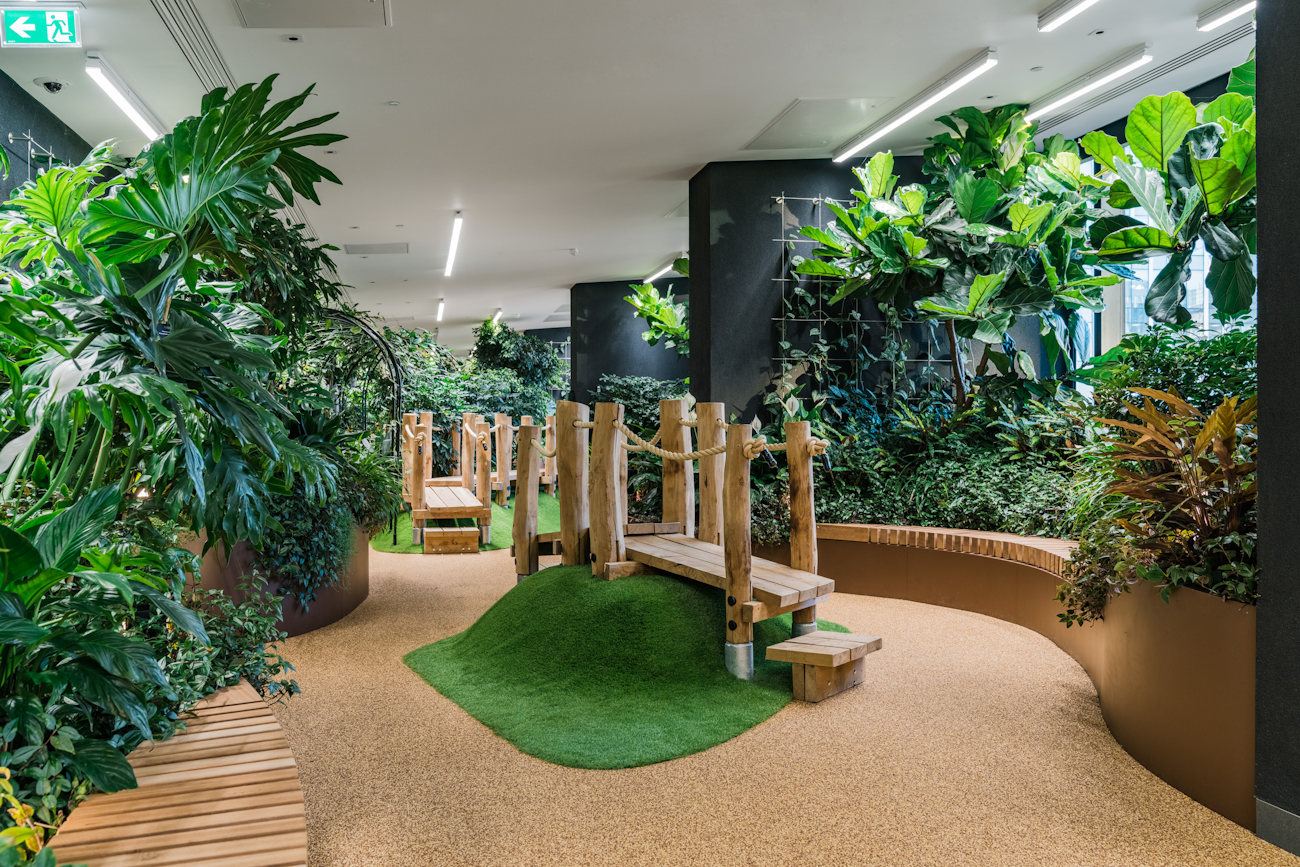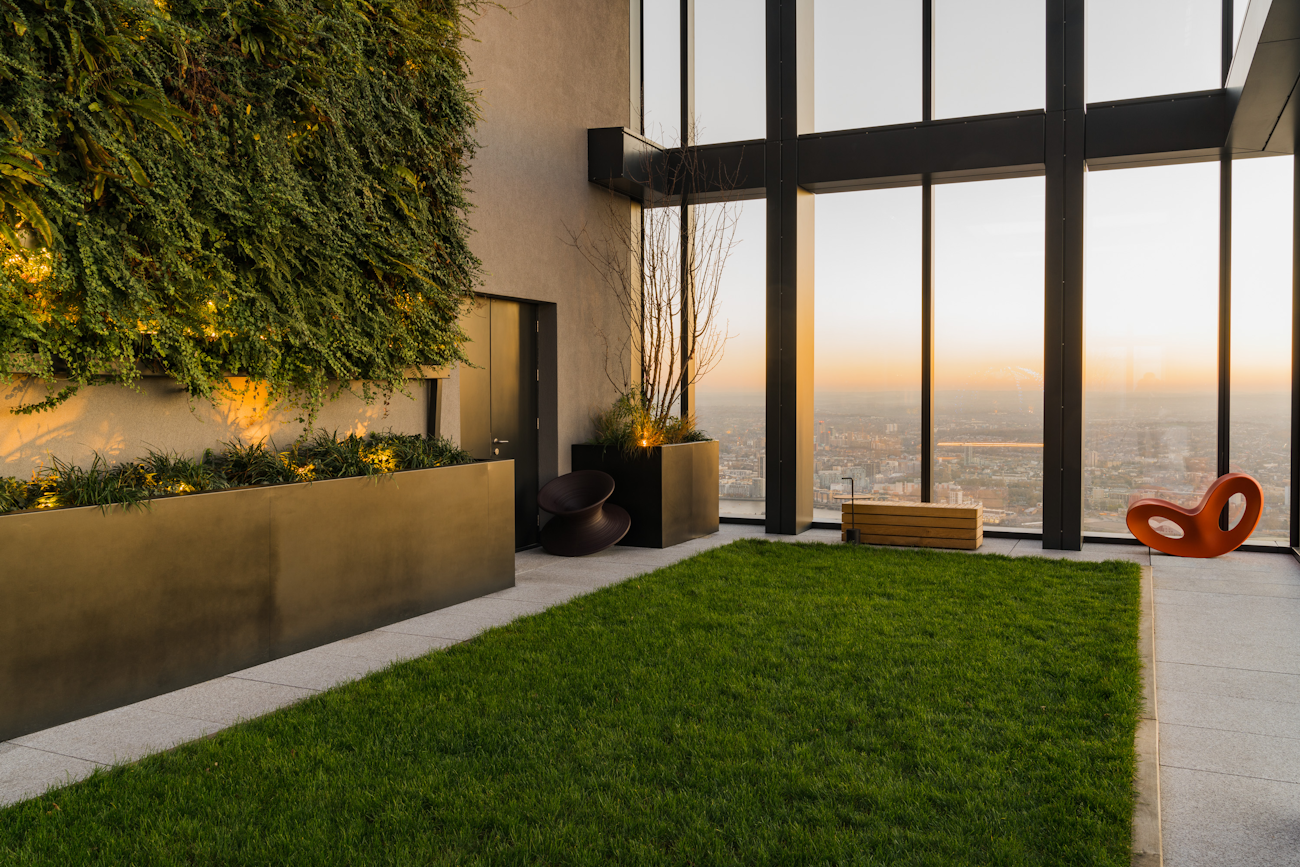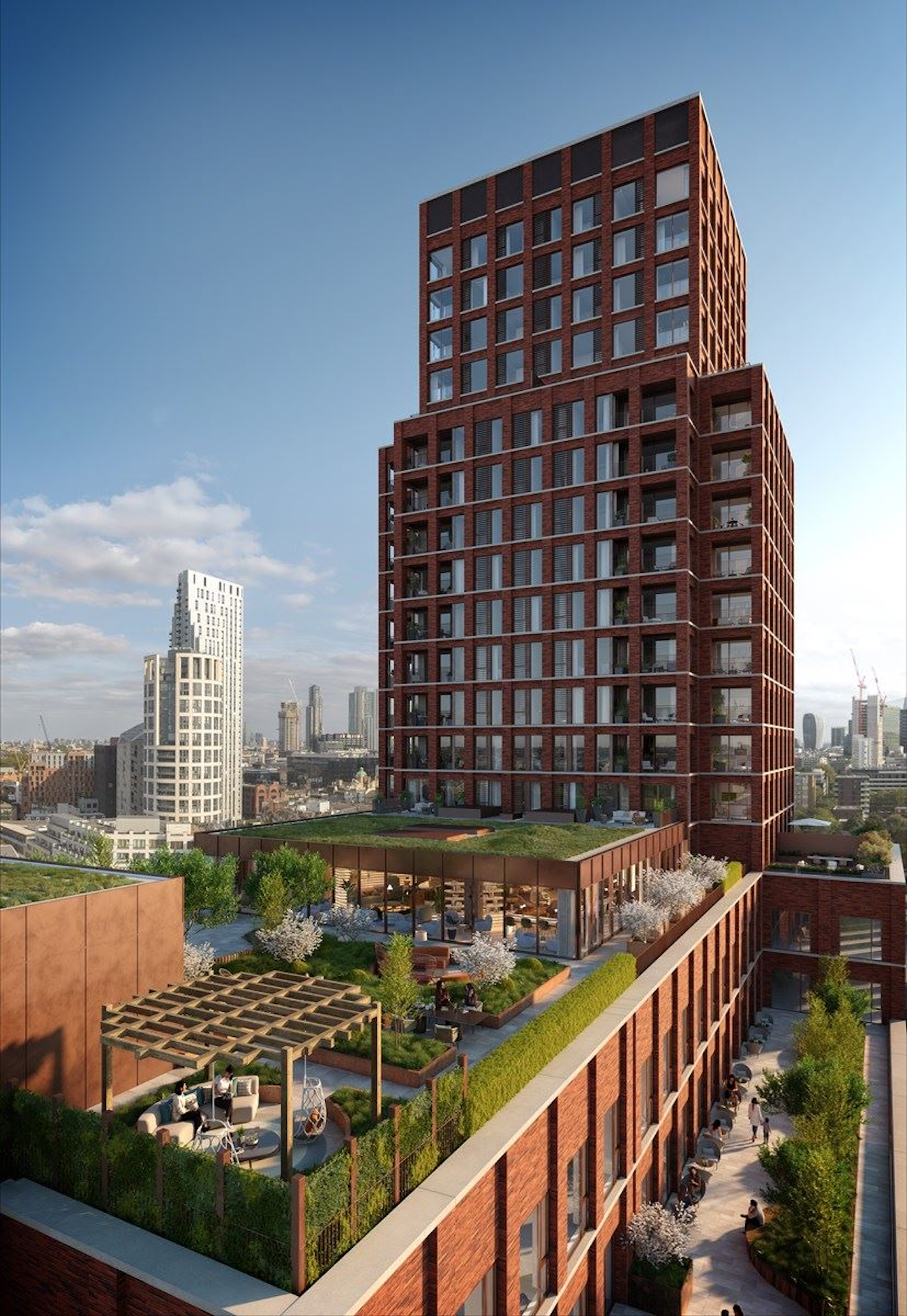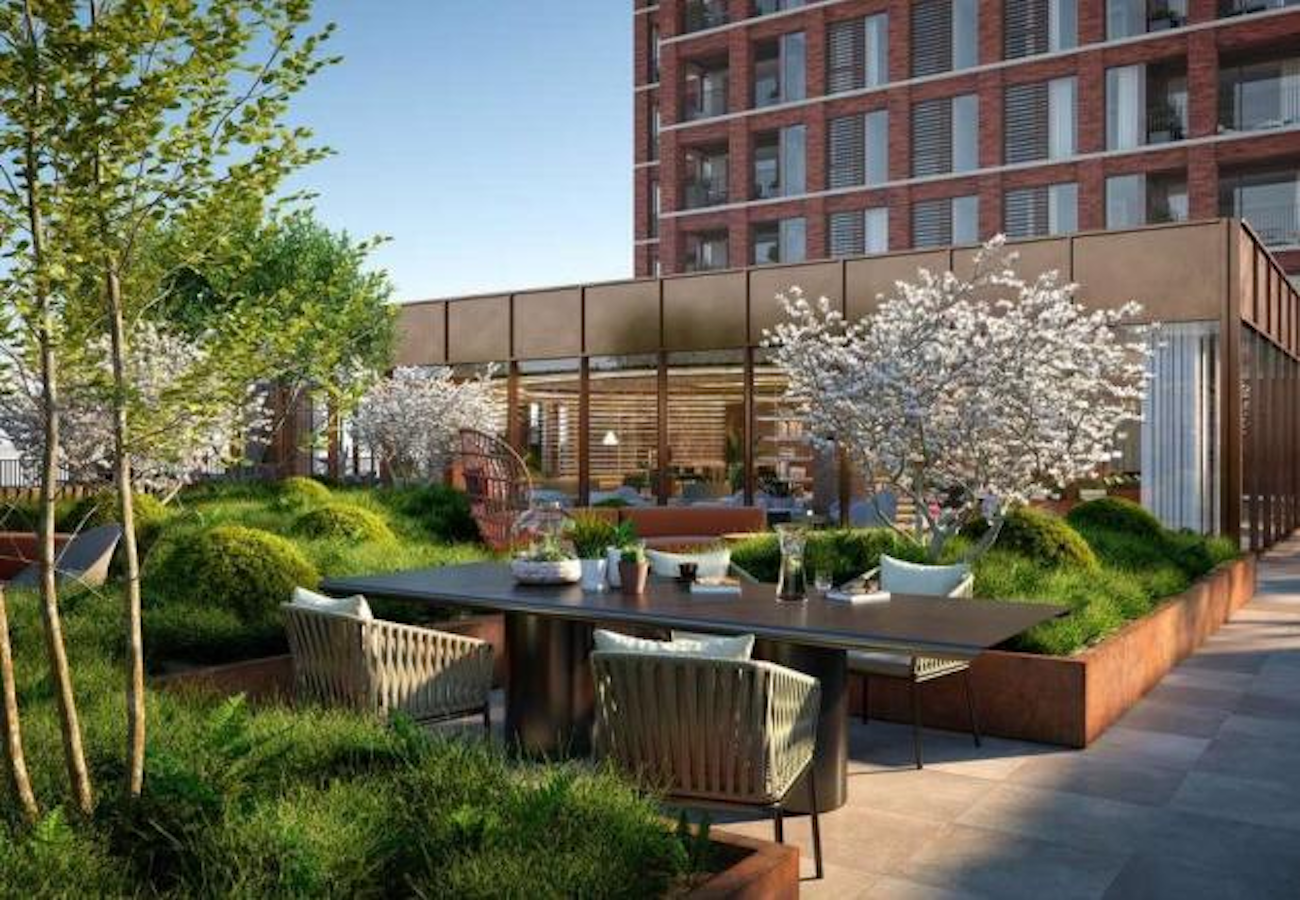Green Roofs & Roof Terraces: Sustainability And Value Compared

What adds more value to your building, a green roof or roof terrace? Do I need to compromise on sustainability to add value to my roof terrace and building?
Property owners and developers are under pressure to make buildings more environmentally sustainable, but does this come at a financial cost? In this article, we look at the benefits of green roofs and roof terraces and the impact they have on property values.

What’s the difference between a green roof and a roof terrace?
Green roofs are divided into extensive and intensive green roofs. An extensive green roof generally has a depth of soil or other growing medium of 200mm or less, which means it can only support grasses and smaller plant species.
An intensive green roof, with a soil depth of up to a metre, can support small shrubs and trees. However, because of the significantly higher weight of the soil, the area that an intensive green roof can cover will often be limited due to structural considerations.
As green roof design has evolved we are seeing a blurring of the lines between extensive and intensive green roofs, with designs combining both styles to create ‘semi-intensive’ green roofs.
A roof terrace often features a combination of hard and soft landscaping to create an area that is designed to be more accessible and more suited to recreation, relaxation and socialising. Planting is confined to pots and planters, but these offer greater soil depths that will support larger trees.

What are the environmental advantages of green roofs and roof terraces?
Green roofs and roof terraces both have environmental benefits, including
Sustainability
By introducing living plants to otherwise barren roof spaces, green roofs and roof terraces help to restore ecosystems, habitats and wildlife corridors in highly developed urban areas
Air quality
Air pollution in the UK is still a problem that claims a staggering 24,000 lives each year.
Studies have revealed that green roofs can bring significant improvements to air quality including a 37% reduction in sulphur dioxide, a 21% reduction in nitrous acid and an airborne dust particle reduction of 0.2kg per square metre.
Rainwater management
Whereas a conventional roof is designed to shed rainwater quickly and efficiently, a green roof or roof terrace will absorb rainwater and release it more slowly over a longer period. This reduces the risk of urban flooding.
What are the financial advantages of green roofs and roof terraces?
The environmental and social benefits of green roofs and roof terraces are undeniable and cannot be ignored, but what financial benefits can they bring to property owners and developers?
Energy efficiency
Both options, and green roofs in particular, are good insulators that retain heat that might be lost through the roof in cooler months and reduce building temperatures (and the need for air conditioning) in the summer. With energy costs spiralling, this factor is now more relevant than ever.
Structural protection
When installed correctly, a green roof or roof terrace can act as a barrier against climate conditions that can cause roof structures and coverings to deteriorate.
Added value
Maybe the most significant financial inducement of them all, a green roof or roof terrace is said to add as much as 30% to the value of a property. This increase is more likely when the roof area is accessible and can be used as an extension of residential or commercial space.

Green roof vs. roof terraces: which wins the sustainability and value balance?
It hardly needs saying that a green roof is the better option in terms of sustainability. With a higher proportion of space given over to vegetation, it comes out tops for roof insulation and rainwater management, but a green roof is less likely to directly add monetary value to a property.
A roof terrace generally features a combination of hard and soft landscaping to create an accessible, enjoyable space for residents and workers. This means the proportion of space given to planting is reduced and rainwater management won’t be so efficient. On the other hand, the pots and planters used in roof terrace design offer far greater choice in the species of shrubs and small trees that can be used, thereby creating a wider diversity of habitats and protection for wildlife.
At the end of the day, property values are dictated by private or commercial occupants’ expectations. In an otherwise like for like comparison, a property that offers the additional outdoor space of a roof terrace is always going to be more popular than one that has a green roof that at best can only be enjoyed from a window.
While sustainability is a conversation that will be with us for years to come, the factor that will ultimately make properties with roof terraces more desirable and therefore command higher prices on the market will be quality of life.
Discuss your roof terrace project with Raaft
If you have a roof garden or terrace project that you would like to discuss, you can speak to Raaft. As a leading UK designer and manufacturer of roof terrace and planter systems, roof decking and tiles, we can assist you at every stage of the design, specification and installation process. Contact us on +44 (0)20 3146 7879 or at [email protected]. Alternatively, send us a message via our website enquiry form and one of our technical support team will respond promptly.